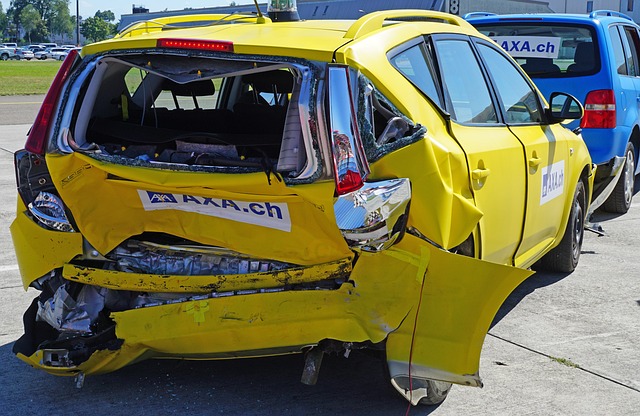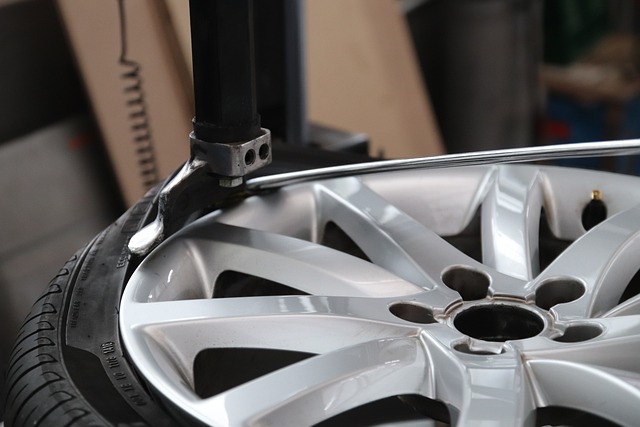Mastering Tesla Sentry Mode: Setup & Multi-Device Media Access
Tesla Sentry Mode is an advanced safety feature that uses cameras and sensors to monitor your vehicl…….
In the rapidly evolving realm of autonomous driving, Tesla’s Sentry Mode stands as a pioneering technology that has captured the attention of both industry experts and everyday drivers. This innovative system, designed to enhance safety and security, has become a pivotal feature in Tesla vehicles, offering a comprehensive suite of driver assistance features. The Tesla Sentry Mode setup is not merely about advanced sensors and cameras; it represents a holistic approach to accident prevention, pedestrian protection, and overall vehicle security. This article aims to provide an in-depth exploration of this remarkable technology, its global impact, technological underpinnings, and the challenges it faces, ultimately shedding light on its significance in the automotive landscape.
Definition: Tesla Sentry Mode is a sophisticated driver assistance system designed to detect and mitigate potential threats on the road, enhancing both driving safety and vehicle security. It utilizes a network of cameras, sensors, and advanced software algorithms to monitor surroundings and provide real-time feedback to drivers.
Key Components:
Camera System: Tesla vehicles are equipped with a ring of high-resolution cameras strategically placed around the car, offering a 360-degree view. These cameras capture detailed footage, enabling the system to detect obstacles, pedestrians, and traffic signs.
Sensors: A suite of sensors, including ultrasonic and radar sensors, work in tandem with the camera system. They provide precise range data, allowing for accurate detection of objects at varying distances.
Software Algorithms: The heart of Sentry Mode lies in sophisticated software algorithms that process sensor and camera data in real time. These algorithms power features like object detection, collision avoidance, and lane departure warnings.
Historical Context: Tesla’s journey into autonomous driving began with the introduction of Autopilot in 2014, which focused on adaptive cruise control and lane keeping. Over time, Tesla enhanced its capabilities, leading to the evolution of Sentry Mode. The system has undergone several updates since its initial release, reflecting Tesla’s commitment to continuous improvement and safety enhancement.
Significance: Sentry Mode represents a significant leap forward in autonomous driving technology, moving beyond basic driver assistance towards proactive collision avoidance. It plays a crucial role in:
Pedestrian Protection: By detecting pedestrians and cyclists, especially in low-light conditions, Sentry Mode helps prevent accidents involving vulnerable road users.
Collision Avoidance: Through real-time object detection, it warns drivers about potential collisions with vehicles, obstacles, or lane markings, enabling prompt corrective actions.
Security Enhancement: The system also serves as a deterrent to theft and vandalism, providing alerts for suspicious activities around the vehicle.
Tesla Sentry Mode’s impact extends far beyond its adoption in Tesla vehicles, influencing global trends and regulations in autonomous driving. Here’s an overview of its worldwide reach:
| Region | Impact and Trends |
|---|---|
| North America | Leading the charge in autonomous vehicle development, the US has seen a surge in interest from both tech companies and traditional automakers. Sentry Mode’s presence in Tesla vehicles has set a benchmark for safety features, encouraging competitors to enhance their own driver assistance systems. |
| Europe | With stringent safety regulations, Europe has become a testing ground for autonomous driving technologies. Many European automakers are integrating similar collision avoidance systems, drawing inspiration from Tesla’s Sentry Mode and its proven track record. |
| Asia-Pacific | Countries like Japan and South Korea are investing heavily in autonomous vehicle research. Tesla’s system is studied and adapted to meet local standards, reflecting the global appeal and influence of Sentry Mode. |
| Emerging Markets | In regions where road safety infrastructure is evolving, Sentry Mode offers a cost-effective solution. Its ability to enhance driver awareness and reduce accidents is particularly valuable for areas with high traffic density and limited resources for road safety improvements. |
The Tesla Sentry Mode setup has significant economic implications, shaping market dynamics and attracting substantial investments in the automotive sector:
Market Growth: The global advanced driver assistance systems (ADAS) market, driven by the adoption of Sentry Mode and similar technologies, is projected to reach USD 125.83 billion by 2027, growing at a CAGR of 24.6% from 2020 to 2027 (Source: Grand View Research).
Investment Opportunities: The increasing demand for Sentry Mode-like systems has opened up investment avenues in automotive startups focusing on driver assistance technologies. These companies are developing specialized hardware and software solutions, contributing to the overall innovation ecosystem.
Cost Savings: By reducing accidents and improving road safety, advanced collision avoidance systems like Sentry Mode can lead to significant insurance cost savings for drivers. This economic benefit further strengthens the case for widespread adoption of such technologies.
Tesla’s continuous innovation in Sentry Mode reflects the rapid advancements in autonomous driving technology. Key technological breakthroughs include:
Deep Learning and Computer Vision: Tesla’s algorithms leverage deep learning techniques to analyze complex visual data from cameras, enabling better object detection and recognition, especially in challenging weather conditions.
Sensor Fusion: Integrating data from multiple sensors, including cameras and LiDAR, allows for highly accurate environment perception. This fusion of sensor data improves overall system robustness and performance.
Over-the-Air Updates (OTA): Tesla’s ability to deliver software updates remotely keeps Sentry Mode current with the latest safety features and improvements. OTA updates ensure that drivers have access to the most advanced technology without requiring physical visits to dealerships.
Hardware Upgrades: Regular hardware upgrades, such as improved camera sensors and more powerful processors, enhance the system’s performance and expand its capabilities, ensuring Tesla stays ahead of the curve in autonomous driving.
The rapid pace of technological advancement in autonomous vehicles has prompted governments worldwide to develop regulatory frameworks to ensure safety and accountability. Tesla Sentry Mode, being a key component in this technology, is subject to various policies and regulations:
Safety Standards: Organizations like NHTSA (National Highway Traffic Safety Administration) in the US set safety standards for ADAS, ensuring that systems like Sentry Mode meet rigorous criteria before their deployment.
Data Privacy Laws: As Sentry Mode collects and analyzes vast amounts of data, regulations such as GDPR (General Data Protection Regulation) in Europe govern how this data is handled, stored, and protected to safeguard user privacy.
Liability and Insurance: The legal implications of autonomous driving accidents are complex. Regulators are grappling with determining liability when a collision occurs, especially involving vehicles with advanced driver assistance systems like Sentry Mode. Insurers are also adapting their policies to accommodate these new technologies.
Despite its remarkable capabilities, Tesla Sentry Mode faces several challenges and criticisms that must be addressed for widespread adoption:
Reliability in Extreme Conditions: While Sentry Mode excels in most weather conditions, its performance can degrade in extreme situations like heavy rain or snow. Improvements in weather-resilient sensors and algorithms are necessary to ensure consistent safety in all environments.
Ethical Considerations of Sensor Data: The vast amount of data collected by Sentry Mode raises ethical questions about privacy and data usage. Transparent data handling practices and user consent mechanisms are essential to gaining public trust.
System Failures and Malfunctions: As with any complex technology, there is a risk of system failures or malfunctions. Rigorous testing and redundancy measures are required to minimize these risks and ensure driver safety in critical situations.
Actionable Solutions: To address these challenges:
Tesla should continue refining its algorithms through extensive real-world testing, especially in diverse weather conditions.
Collaborating with regulatory bodies to establish clear guidelines on data collection, storage, and usage can enhance public trust.
Implementing redundant safety systems and continuous monitoring of primary sensors can mitigate the risk of failures.
In a dense urban setting with high pedestrian traffic, a city implemented Tesla Sentry Mode across its public transportation fleet. The system successfully detected and warned drivers about pedestrians crossing roads at non-signal intervals, leading to a significant reduction in accidents involving vulnerable road users. This case highlights the potential of Sentry Mode to protect pedestrians, a group often at higher risk in urban environments.
A national highway authority integrated Tesla’s collision avoidance system into their fleet of maintenance vehicles. The result was a marked decrease in accidents caused by lane drifting and rear-end collisions. This application demonstrates how Sentry Mode can contribute to safer road operations, not just for passenger vehicles but also for critical infrastructure maintenance.
In a high-crime area, Tesla owners reported a substantial drop in vehicle thefts and vandalism after installing the Sentry Mode system. The advanced cameras and sensors acted as a visible deterrent, providing real-time alerts to owners about suspicious activities around their vehicles. This success story underscores the security benefits of this technology for both private citizens and businesses.
The Tesla Sentry Mode setup is poised for significant growth and evolution in the years ahead, driven by technological advancements and changing market dynamics. Here are some potential areas of development:
Advanced Computer Vision: Continued improvements in computer vision algorithms will enhance object detection accuracy, enabling better understanding of complex traffic scenarios, including intersections and multi-lane situations.
Integration with AR Head-Up Displays: Visualizing collision avoidance data on augmented reality (AR) head-up displays can provide drivers with critical information without taking their eyes off the road, enhancing overall driving experience.
Global Regulatory Harmonization: As more countries adopt autonomous driving technologies, there is a growing need for global regulatory harmonization to facilitate cross-border vehicle movements and streamline safety standards.
V2X Communication: Vehicle-to-everything (V2X) communication, enabling direct communication between vehicles and infrastructure, can further enhance Sentry Mode’s capabilities by sharing real-time traffic data and improving overall road safety.
Tesla Sentry Mode setup represents a significant milestone in the journey towards fully autonomous vehicles, offering a comprehensive suite of driver assistance features that enhance safety, security, and overall driving experience. Its global impact is evident through widespread adoption, regulatory frameworks, and continuous technological advancements.
Despite challenges and criticisms, Tesla’s commitment to innovation and public safety sets a benchmark for competitors. As the technology matures and addresses pending issues, Sentry Mode will play an increasingly critical role in reducing accidents, protecting vulnerable road users, and fostering public trust in autonomous driving.
Q: How does Tesla Sentry Mode differ from other driver assistance systems?
A: Tesla Sentry Mode stands out due to its holistic approach, combining advanced cameras, sensors, and software algorithms to offer a comprehensive suite of safety features. Unlike basic lane-keeping or adaptive cruise control systems, Sentry Mode actively predicts and avoids potential collisions, enhancing driver confidence.
Q: Is Sentry Mode available in all Tesla models?
A: As of the latest updates, Sentry Mode is standard in most recent Tesla vehicle models, including the Model 3, Model Y, Model S, and Model X. Older model owners can also upgrade their systems through Tesla’s software over-the-air updates.
Q: Can Sentry Mode completely replace a human driver?
A: While Sentry Mode significantly enhances safety and provides assistance, it is not designed to replace human drivers entirely. It serves as a tool to support drivers, making them more aware of their surroundings and helping them make better decisions on the road. Ultimately, safe driving still requires active human involvement.
Q: How does Tesla ensure the privacy of data collected by Sentry Mode?
A: Tesla employs robust data protection measures, including encryption and anonymization techniques, to safeguard user privacy. They also provide clear data usage policies and give users control over their data preferences through in-app settings, ensuring transparency and user consent.

Tesla Sentry Mode is an advanced safety feature that uses cameras and sensors to monitor your vehicl…….

Tesla Sentry Mode is a safety feature that uses cameras and sensors to monitor potential threats aro…….

Tesla Sentry Mode is a powerful safety system for vehicle protection. New owners should set it up fo…….

Tesla Sentry Mode is a safety feature that uses cameras and sensors to monitor parked vehicles, dete…….

“Dive into the world of Tesla’s advanced security feature, Sentry Mode, with our comprehensive guide…….

Tesla’s Sentry Mode is a cutting-edge security feature that enhances driver awareness. This advanced…….

Tesla Sentry Mode is a revolutionary safety feature that uses cameras, sensors, and software for 360…….

Tesla Sentry Mode setup offers revolutionary security for vehicles through an integrated network of…….

Tesla Sentry Mode is a safety feature that uses cameras, sensors, and AI for 360-degree surveillance…….